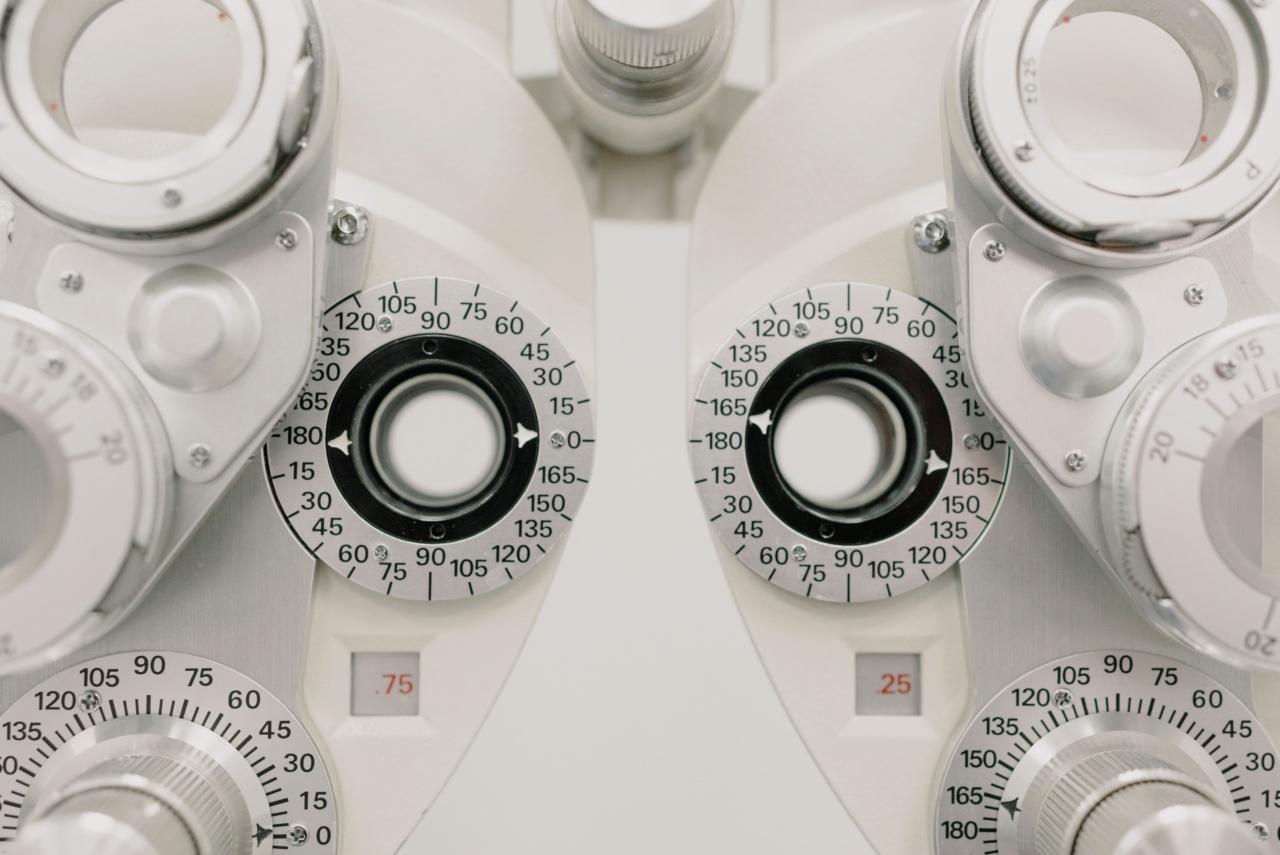Ophthalmic diseases refer to diseases that affect the eye or its related structures, including the eyelids, cornea, lens, retina, and optic nerve.
Some of these diseases are hereditary, while others are caused by infections, injuries, or environmental factors. In this article, we will explore the most common ophthalmic diseases and their symptoms, causes, and treatments.
Age-Related Macular Degeneration (ARMD)
Age-related macular degeneration is a common eye disease that affects people aged 50 and above. It causes damage to the macula, the central part of the retina responsible for sharp, clear vision.
Symptoms of ARMD include blurred or distorted vision, difficulty reading or recognizing faces, and dark patches in the center of the visual field.
The causes of ARMD are not entirely clear, but research suggests that age, genetics, and lifestyle factors such as smoking, high blood pressure, and poor nutrition may increase the risk of developing the disease.
Treatment for ARMD may include medications, laser therapy, or surgery.
Glaucoma
Glaucoma is a group of eye diseases that damage the optic nerve and cause gradual vision loss. It is often called the “silent thief of sight” because the initial symptoms are minimal, and the disease progresses slowly over time.
The most common type of glaucoma is primary open-angle glaucoma, which affects people aged 60 and above.
The causes of glaucoma may include genetics, age, and other medical conditions such as diabetes and high blood pressure. Treatment for glaucoma includes medications, laser therapy, and surgery.
Cataracts
Cataracts are a common eye condition that affects people aged 40 and above. It occurs when the lens of the eye becomes cloudy, causing blurry vision, glare, and sensitivity to light.
The causes of cataracts include age, genetics, and environmental factors such as smoking and exposure to UV radiation.
Treatment for cataracts involves surgery to remove the cloudy lens and replace it with an artificial lens. The surgery is generally safe and effective and can be done on an outpatient basis.
Diabetic Retinopathy
Diabetic retinopathy is a condition that affects people with diabetes and causes damage to the blood vessels in the retina. It can lead to vision loss or blindness if left untreated.
Symptoms of diabetic retinopathy may include blurred vision, floaters, and difficulty seeing at night.
The causes of diabetic retinopathy include high blood sugar levels, high blood pressure, and smoking. Treatment for diabetic retinopathy may include medications, laser therapy, or surgery.
Dry Eye Syndrome
Dry eye syndrome is a common condition that occurs when the eyes do not produce enough tears or when the tears evaporate too quickly. It can cause discomfort, redness, and blurry vision.
The causes of dry eye syndrome include aging, hormonal changes, medications, and environmental factors such as dry air and wind.
Treatment for dry eye syndrome includes medications, artificial tears, and lifestyle changes such as avoiding exposure to dry air and wind.
Conjunctivitis
Conjunctivitis, also known as pink eye, is an inflammation of the conjunctiva, the thin membrane that lines the inner surface of the eyelid and covers the white part of the eye.
Symptoms of conjunctivitis include redness, itching, and tearing of the eyes. It can be caused by viral, bacterial, or allergic factors.
Treatment for conjunctivitis depends on the cause and may include antibiotics, antiviral medications, or allergy medications.
Retinal Detachment
Retinal detachment is a serious condition that occurs when the retina, the delicate layer of tissue that lines the back of the eye, pulls away from its underlying tissue.
Symptoms of retinal detachment include flashing lights, floaters, and a curtain-like shadow over the visual field.
The causes of retinal detachment include aging, trauma, and eye conditions such as cataracts and glaucoma. Treatment for retinal detachment often involves surgery to reattach the retina to its underlying tissue.
Macular Hole
A macular hole is a small break in the macula, the central part of the retina responsible for clear, sharp vision. Symptoms of a macular hole may include blurred or distorted vision and difficulty seeing fine details.
The causes of a macular hole may include age, trauma, or other eye conditions such as diabetic retinopathy.
Treatment for a macular hole may include surgery or medications to stimulate the production of new cells in the macula.
Anophthalmia/Microphthalmia
Anophthalmia and microphthalmia are rare eye conditions that affect the development of the eye and lead to the absence or underdevelopment of one or both eyes.
They may be caused by genetic factors, infections, or environmental factors such as exposure to toxins or radiation.
Treatment for anophthalmia and microphthalmia depends on the severity of the condition and may involve surgery, prosthetics, and vision therapy.






















